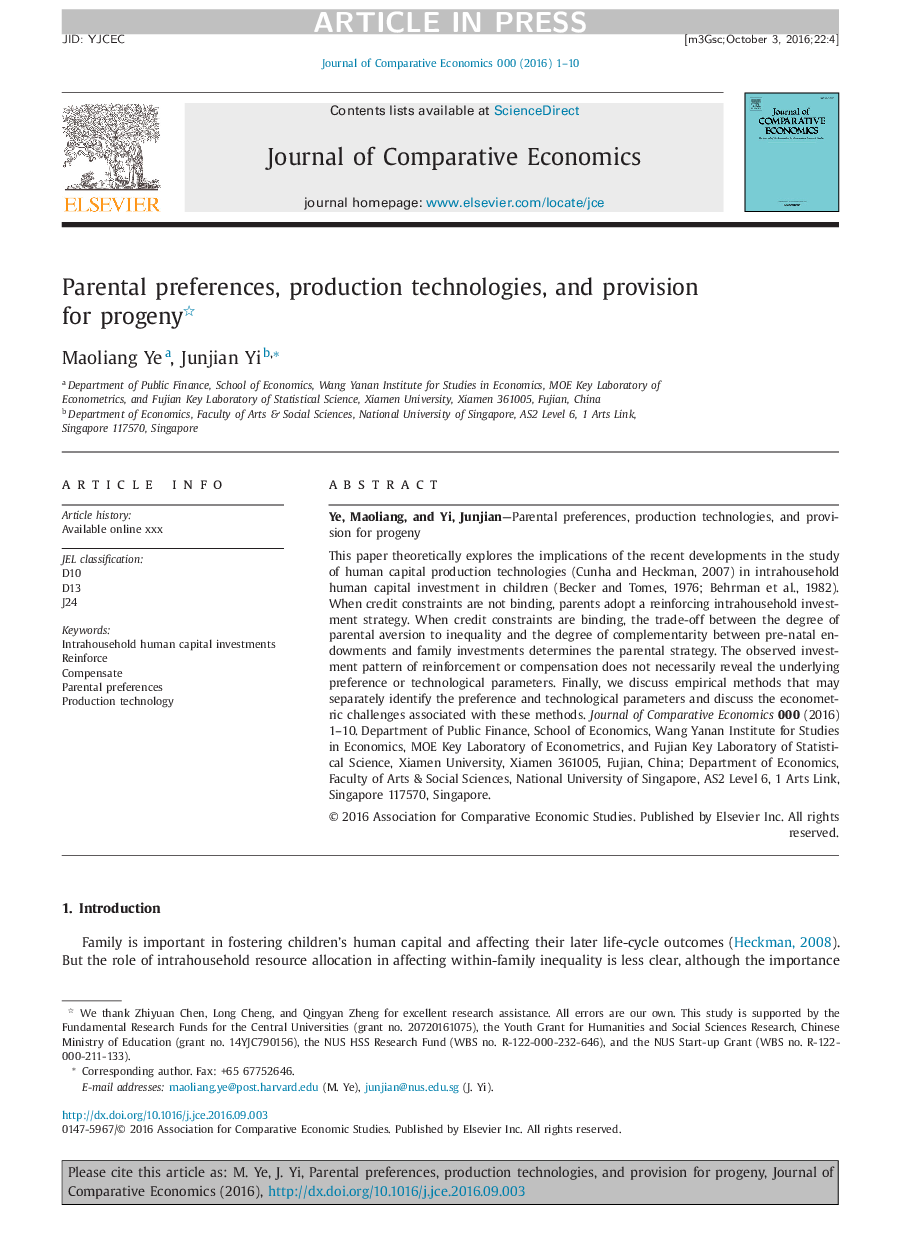| Article ID | Journal | Published Year | Pages | File Type |
|---|---|---|---|---|
| 5092048 | Journal of Comparative Economics | 2017 | 10 Pages |
Abstract
This paper theoretically explores the implications of the recent developments in the study of human capital production technologies (Cunha and Heckman, 2007) in intrahousehold human capital investment in children (Becker and Tomes, 1976; Behrman et al., 1982). When credit constraints are not binding, parents adopt a reinforcing intrahousehold investment strategy. When credit constraints are binding, the trade-off between the degree of parental aversion to inequality and the degree of complementarity between pre-natal endowments and family investments determines the parental strategy. The observed investment pattern of reinforcement or compensation does not necessarily reveal the underlying preference or technological parameters. Finally, we discuss empirical methods that may separately identify the preference and technological parameters and discuss the econometric challenges associated with these methods.
Related Topics
Social Sciences and Humanities
Economics, Econometrics and Finance
Economics and Econometrics
Authors
Maoliang Ye, Junjian Yi,
